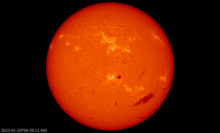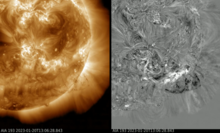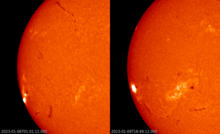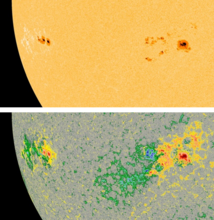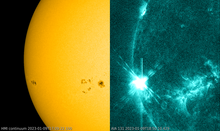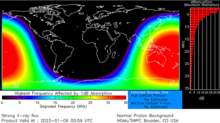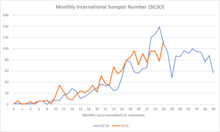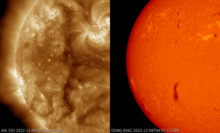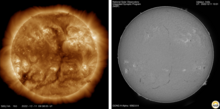news
Submitted on 2023-02-08
The STCE's SC25 Tracking page has been updated to reflect the latest evolution in some critical space weather parameters for the ongoing solar cycle 25 (SC25).
Submitted on 2023-01-24
On 20 January, a large filament in the southwest solar quadrant erupted producing some spectacular images.
Submitted on 2023-01-18
Solar activity continued to be elevated, with both the sunspot number and the solar radio flux reaching their highest values so far this solar cycle.
Submitted on 2023-01-11
The Sun produced a 3rd X-class flare in just 5 days. This page features the ongoing series of X-class flares and other solar activity. UPDATED 1.
Submitted on 2023-01-10
A side-by-side comparison of and more details on the X-class flares from 6 and 9 January.
Submitted on 2023-01-09
Compact and complex sunspot group NOAA 3184 produced a X1.9 flare on 9 January.
Submitted on 2023-01-06
NOAA 3182 produced an X-class flare early on 6 January. Space weather effects are limited.
Submitted on 2023-01-02
Exactly 3 years after the start of the new solar cycle, the monthly sunspot number has exceeded 100 for the first time.
Submitted on 2022-12-12
What looked like a weak coronal hole structure in EUV imagery turned out to be a filament channel.
Submitted on 2022-12-12
The PROBA2 PI-team welcomes research proposals for the tenth round of its Guest Investigator program for research based on SWAP and LYRA data analysis by scientists outside the SWAP and LYRA PI-teams.
Pages
Zircon - This is a contributing Drupal Theme
Design by
WeebPal.






